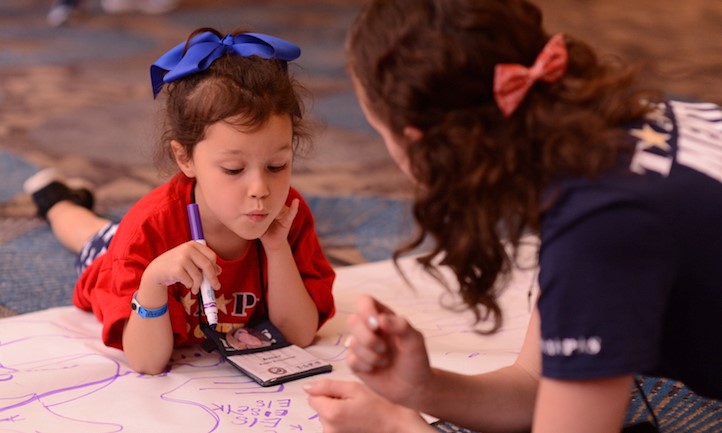3 Things Play Therapy Helps Us Remember About Children’s Grief
Author: Tina Barrett

Last summer, I walked to the Clark Fork River with Anna, a young girl grieving the death of her mom. Colorful markers were tucked in my pocket. As we strolled, we picked up a few special leaves, rocks and pieces of bark. One by one, Anna transformed these objects into memories and love notes. She tossed the sticks into the river, buried messages on bark in the sand and placed memory rocks in deliberate, special places.
“I miss you” was written strong and clear on a leaf we watched peacefully float down the river. Soon after, she quietly drew a family picture, including her three siblings, father and deceased mother, and placed the bark creation in a nook in a clump of willows.
“Mom, I am so sad that you died” adorned a piece of driftwood, which she then released in an eddy. Together, we watched the weathered branch slowly tumble in the current. Without prompting or encouragement, Anna searched for a special rock. As she angled it to share her words, it was evident she was filled with the image of her mom’s radiant presence. “I remember your smile.”
“I will never forget you,” poured out of Anna’s hurting heart onto a leaf as she perched on a stone near the river.
“Love is always there” — the final message jotted on a stick then deliberately tucked near the roots of a tree.
Anna’s messages instinctively shifted from sadness and longing to memories and hope — illuminating an awareness of the continued relationship and love she shares with her mom.
This profound exchange was spontaneous, unguided, yet supported. As we wrap bereaved kids in care, may we remember:
1. Words fall short.
Provide natural, healthy outlets for a range of emotion and chances to move their little, precious bodies and release energy. May we resist using too many words.
2. Kids are strong, capable and resilient.
Follow the child’s lead. Sometimes we need to stay out of the way and allow the child to let us know what they want, need and enjoy. As kids explore new paths, they metaphorically begin to reconstruct their todays and tomorrows. May we strive to be companions alongside them, exuding our unwavering belief in their ability to love, learn, hurt and heal.
3. Kids make sense of their world through exploration and play.
Provide opportunities to manipulate objects, make a mess and get dirty. As children explore how things fit together, fall apart, break and take on new forms, they begin to make sense of their experiences. What they’ve been through is often tragic. Spilled paint and grass stains are not. May we keep our reactions in perspective.
Recently, Anna and I returned to the river. As we explored the water’s edge Anna chattered about ways she looks like her mom and strives to be like her, moving with grace and kindness. A stick near the base of a tree caught her eye. As she bent to pick it up, a smile came upon her face. Her words were clearly visible: “Love is always there.”
From the pen of…
Dr. Tina Barrett is the Co-founder and Executive Director of Tamarack Grief Resource Center and serves on the TAPS Advisory Board. She strives to create healing programs that honor the significance of loss as well as the relationship that endures with our loved ones who are no longer with us physically.
